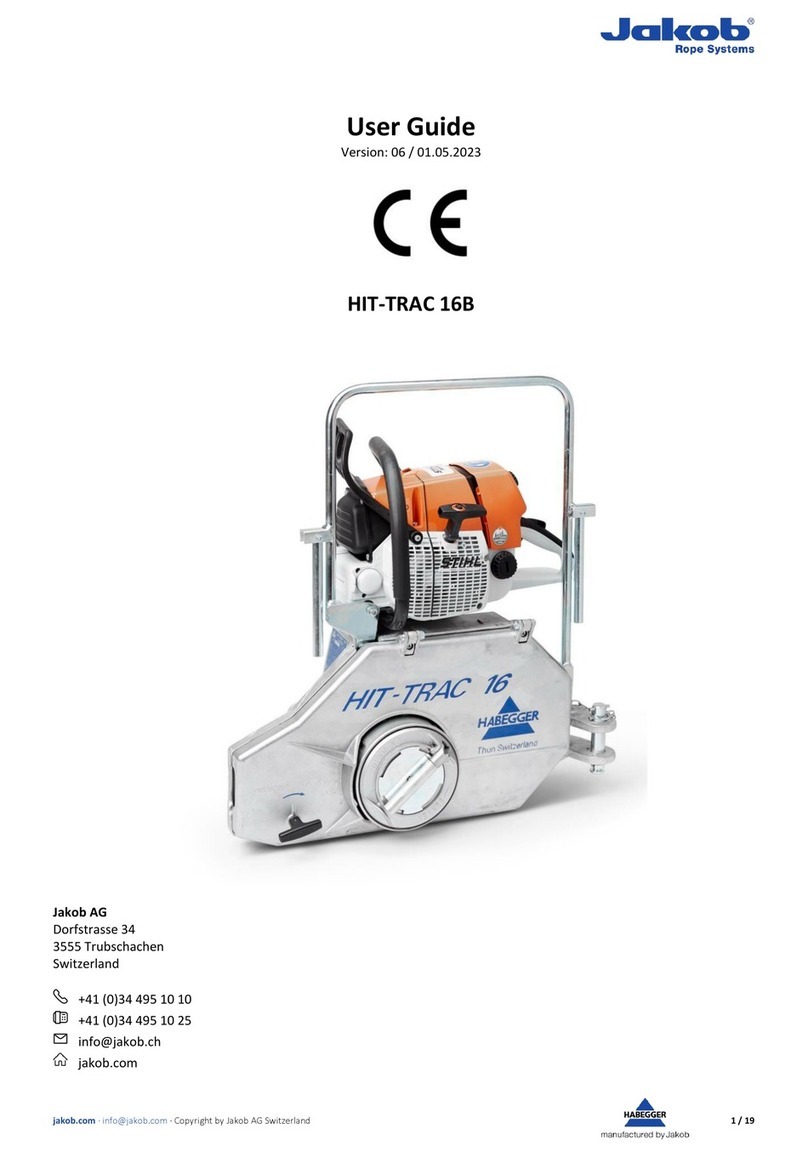Content
1General description................................................................................................................................................................6
1.1 Components ................................................................................................................................................................. 6
1.2 Components HIT-TRAC 8B ............................................................................................................................................7
1.1 Components HIT-TRAC 8A............................................................................................................................................7
2General safety rules ............................................................................................................................................................... 8
2.1 Safety information in this operation manual ............................................................................................................... 8
2.2 Intended use.................................................................................................................................................................8
2.3 Authorized operators ...................................................................................................................................................9
2.4 Warranty and liability provisions..................................................................................................................................9
2.5 Behavior in an emergency situation.............................................................................................................................9
2.6 Product specific hazards...............................................................................................................................................9
2.6.1 Hot surfaces .............................................................................................................................................................9
2.7 Preparation................................................................................................................................................................. 10
2.7.1 Location.................................................................................................................................................................. 10
2.7.2 Anchoring...............................................................................................................................................................10
2.7.3 Load........................................................................................................................................................................ 10
2.7.4 Traction rope.......................................................................................................................................................... 11
2.7.5 Inserting rope......................................................................................................................................................... 11
2.8 Working ...................................................................................................................................................................... 11
2.8.1 Pulling and lifting.................................................................................................................................................... 11
2.8.2 Restart under load HIT-TRAC 8B ............................................................................................................................ 12
2.8.3 Lowering.................................................................................................................................................................12
2.9 Decommissioning .......................................................................................................................................................12
2.10 Storage and transport ................................................................................................................................................12
3Design and function .............................................................................................................................................................13
3.1 Technical specifications..............................................................................................................................................13
3.2 Operation HIT-TRAC 8B ..............................................................................................................................................14
3.3 Operation HIT-TRAC 8A ..............................................................................................................................................14
3.4 Braking........................................................................................................................................................................14
4Operation.............................................................................................................................................................................15
4.1 Preparation................................................................................................................................................................. 15
4.1.1 Petrol motor...........................................................................................................................................................15
4.1.2 Battery Motor ........................................................................................................................................................ 15
4.1.3 Location.................................................................................................................................................................. 15
4.1.4 Anchoring...............................................................................................................................................................15
4.1.5 Load........................................................................................................................................................................ 16
4.1.6 Traction rope.......................................................................................................................................................... 17
4.1.7 Inserting rope......................................................................................................................................................... 17
4.2 Working ...................................................................................................................................................................... 18
4.2.1 Pulling and lifting.................................................................................................................................................... 18
4.2.2 Restart under load ................................................................................................................................................. 18




























